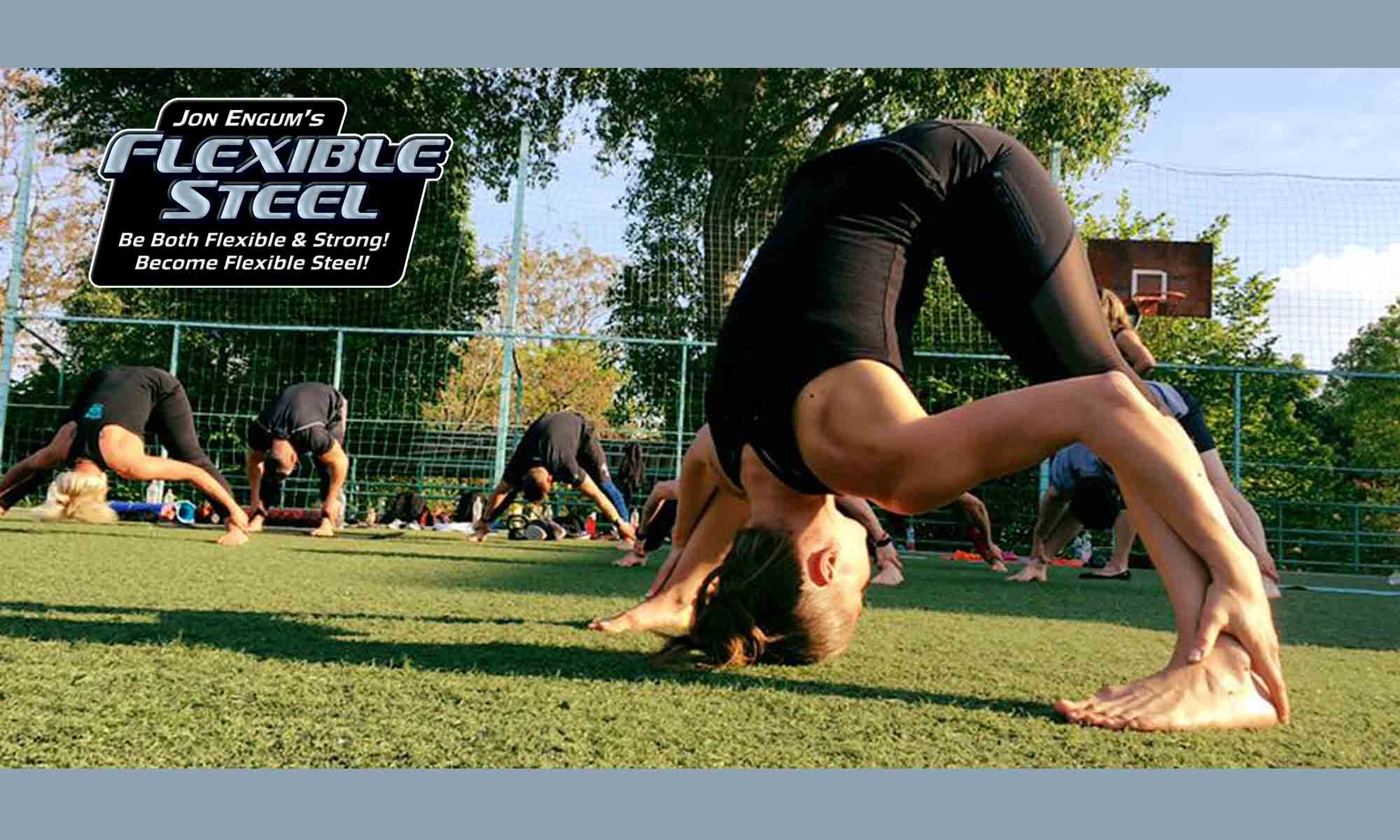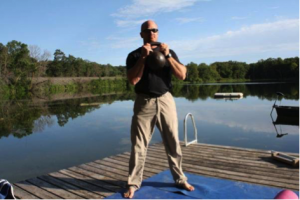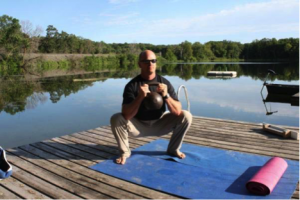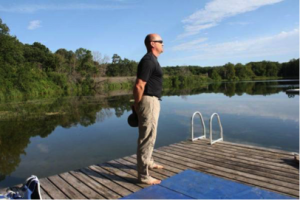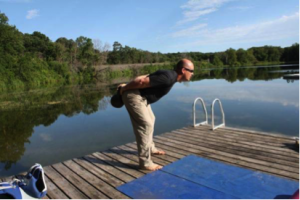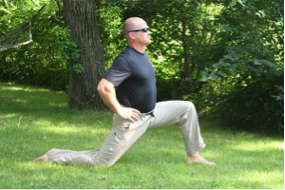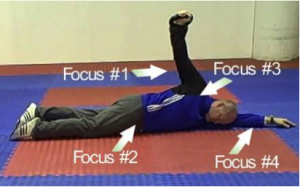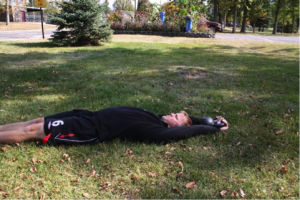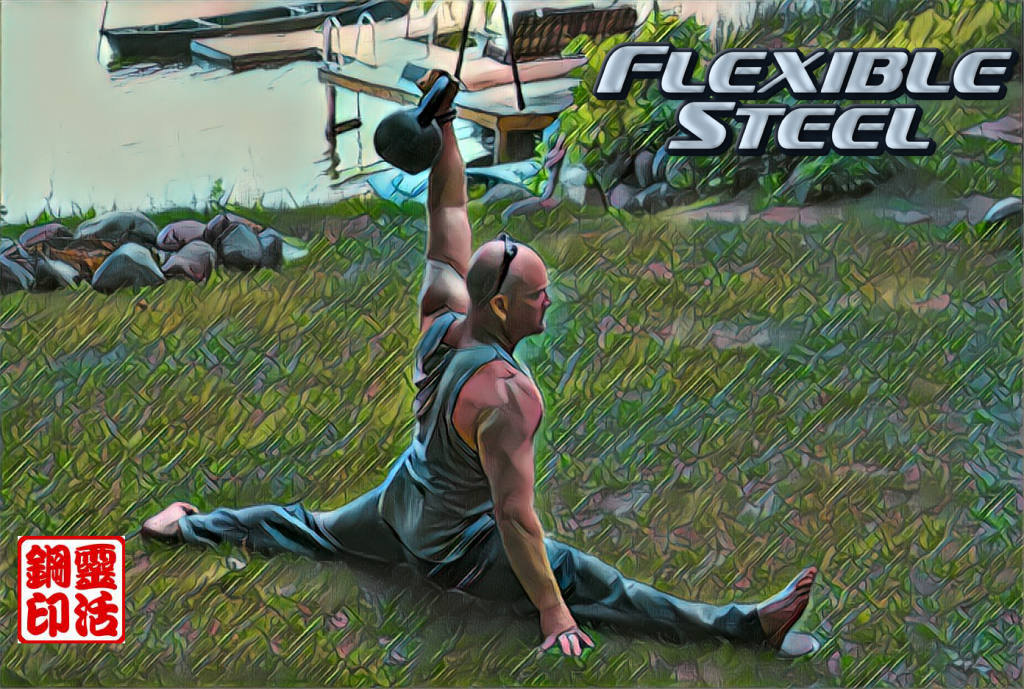
The front splits are important to the longevity of your movement. Besides the cool factor, the front splits are an important addition to your current ease of movement program.
The front splits focus directly on the hamstrings and the hip flexors at the same time making it a big bang for your buck movement. Just ask almost any doctor and they will tell you one contributing factor in lower back, noncontact injuries, is tight or weak hamstrings and hip flexors.
Focused training on the front splits and the supplemental exercises will go a long way to help “bulletproof“ your back.
Follow this program patiently to the letter and I’m sure you will be very happy with results.
Flexibility Training Takes Patience
When you participate in one of our Flexible Steel certifications we give you some amazing instant gains, but for long term sustainable results training must be in the moderate intensity range and consistent. A moderate program with 100% compliance will yield far better results than an advanced intensive program that is not followed precisely.
That said, we will break this program into 2 – 6 week phases, a preparatory phase and a focused front split phase.
Phase I: Preparatory Phase
During the initial phase we will hit the major players with a moderate training program designed to prepare you for more intense focused front split work to follow in phase II.
The Power Tools
Flexible Steel offers many different Power tools to soup up the results of your standard stretching movements. During this program we are going to take advantage of a combination of just two different power tools: Mini contractions and relaxed stretching, a.k.a., waiting out the tension.
A mini contraction is exactly what it sounds like. Put your muscles into a stretch position to the point where you just start to feel a stretch. Then, lightly contract the stretching muscles just enough to move yourself slightly out of position. Relax and repeat the cycle for 10 repetitions. This is not a heavy duty isometric contraction, rather just a twitching of the targeted muscle groups. Each mini contraction will consist of a rhythmical cycle held for about one second and then relax for 1 second. Muscle power on, muscle power off.
After 10 mini contractions, relax and move a little deeper into the stretched position. Hold the static relaxed position for 15 seconds. Don’t guess, you need to actually count to 15.
A combination of 10 mini contractions and a 15 second relaxed hold constitutes one rep. You will repeat this for three reps and this will constitute one set. Remember this ratio: (10 mini contractions and a 15 second relaxed hold.) X3.
The Moves
Phase 1 will include exercises to target the following:
Calves
Hamstrings
Quadriceps
Hip flexors
1. Calf Stretch
The Calf Stretch is best performed with your shoes on so not to stress your foot too much.
- Find a step, block, stair or similar object.
- Stand with the ball of one foot on the edge of the stair and the rest of your foot hanging off in the air. Yes, that does rhyme.
- Lower your heel until you feel stretch in your calf.
- Now contract your calf muscles to raise yourself up a couple inches. This is one mini contraction.
- Repeat for 10 times.
- Let your heels sink deeper into the stretch and hold that position for the count of 15. Repeat the combination of mini contractions and relax stretching for two more cycles.
- Switch feet into the other side.
2. Hamstring Stretch
- Place the heel of your foot on a table, bar, or post that is slightly higher than your waist level.
- Either pad your heel or wear shoes so you’re not distracted by pain in the back of your heel.
- The toes and knee of your airborne legs should be pointed directly to the sky.
- Keep your knee straight.
- The knee of the standing leg should also be straight. Your knee and toes should track.
- Keeping a big chest, place your fingers in the crest of your hip. Using your fingers as a guide fold forward at the hip.
- It is important to note the only movement is coming from your hip. Do not round your back.
- Once you feel stretching in the hamstrings, begin to perform your mini contractions buy driving your heel into the table causing you to rise slightly out of the stretched position.
- Relaxing move deeper into the stretch. This is one mini contraction.
- Repeat 10 more times.
- After the 10th contraction move deeper into stretch position and statically hold for 15 seconds.
- Repeat for three rounds.
3. Quadriceps Stretch
- Bend your knee so your foot goes behind you and your instep is placed on the bench, bar or other similar support about waist high.
- Keep your knees close together.
- Squeezed the glute on the airborne side.
- Tighten up your quads to slightly pull yourself out of the stretch and then relax and move further into stretch. This is one mini contraction.
- Repeat 10 more times.
- After the 10th contraction move deeper into stretch position and statically hold for 15 seconds.
- Repeat for three rounds.
4. Hip flexor Stretch
- Get into a half kneeling position.
- The knee of your right leg and instep of your right foot are facing down, in a straight line and on their own railroad track.
- Your left foot is on the left railroad track.
- Your hips should be squared off and level.
- Do a hip tilt. Imagine your beltline is the rim of a coffee cup, tilt your hips in such a way that the coffee would pour out the back of your “cup.”
- Take both hands and put them on your hips and move your hips forward to increase the feel of the stretch.
- If the knee of your front leg starts to travel past your foot, simply slide your front foot forward a bit to adjust this.
- Once you feel stretching in the hip flexors , begin to perform your mini contractions buy driving your down knee forward into the ground which will cause you to move out of the stretch a bit then relax and move deeper into the move.
- This is one mini contraction.
- Repeat 10 more times.
- After the 10th contraction move deeper into stretch position and statically hold for 15 seconds.
- Repeat for three rounds.
The Program
These exercises will be performed as a short circuit. Some days you only have to do one circuit while other days you will perform the circuit two to three times. Do one round of each exercise and this will constitutes one circuit.
The six week program will shake out like this. You will train four days a week. You may insert this stretching program after your regular strength training/sport practice or, as a standalone program. If you use it as a standalone program, make sure to do your mobility drills prior to doing the intense stretching.
Further Explanation
1. Number of days should be self explanatory.
2. Intensity stands for how hard your mini contractions are.
3. L equals light contraction. In other words just barely contract your muscles.
4. M equals medium contraction. So contract the muscles harder than you would during late days but not as hard as you possibly can.
5. H equals hard contraction. Contract stretching muscles is hard as possible.
6. Circuit means how many rounds you will do of the program.
7. X means no stretching on this day.
Weeks 1-2
| Day | 1 | 2 | 3 | 4 | 5 | 6 | 7 |
| Intensity | L | L | X | L | L | X | X |
| Circuits | 1 | 1 | X | 1 | 1 | X | X |
Weeks 3-4
| Day | 1 | 2 | 3 | 4 | 5 | 6 | 7 |
| Intensity | M | H | X | L | M | X | X |
| Circuits | 2 | 3 | X | 1 | 2 | X | X |
Weeks 5-6
| Day | 1 | 2 | 3 | 4 | 5 | 6 | 7 |
| Intensity | M | H | X | L | M | X | X |
| Circuits | 3 | 3 | X | 3 | 3 | X | X |
